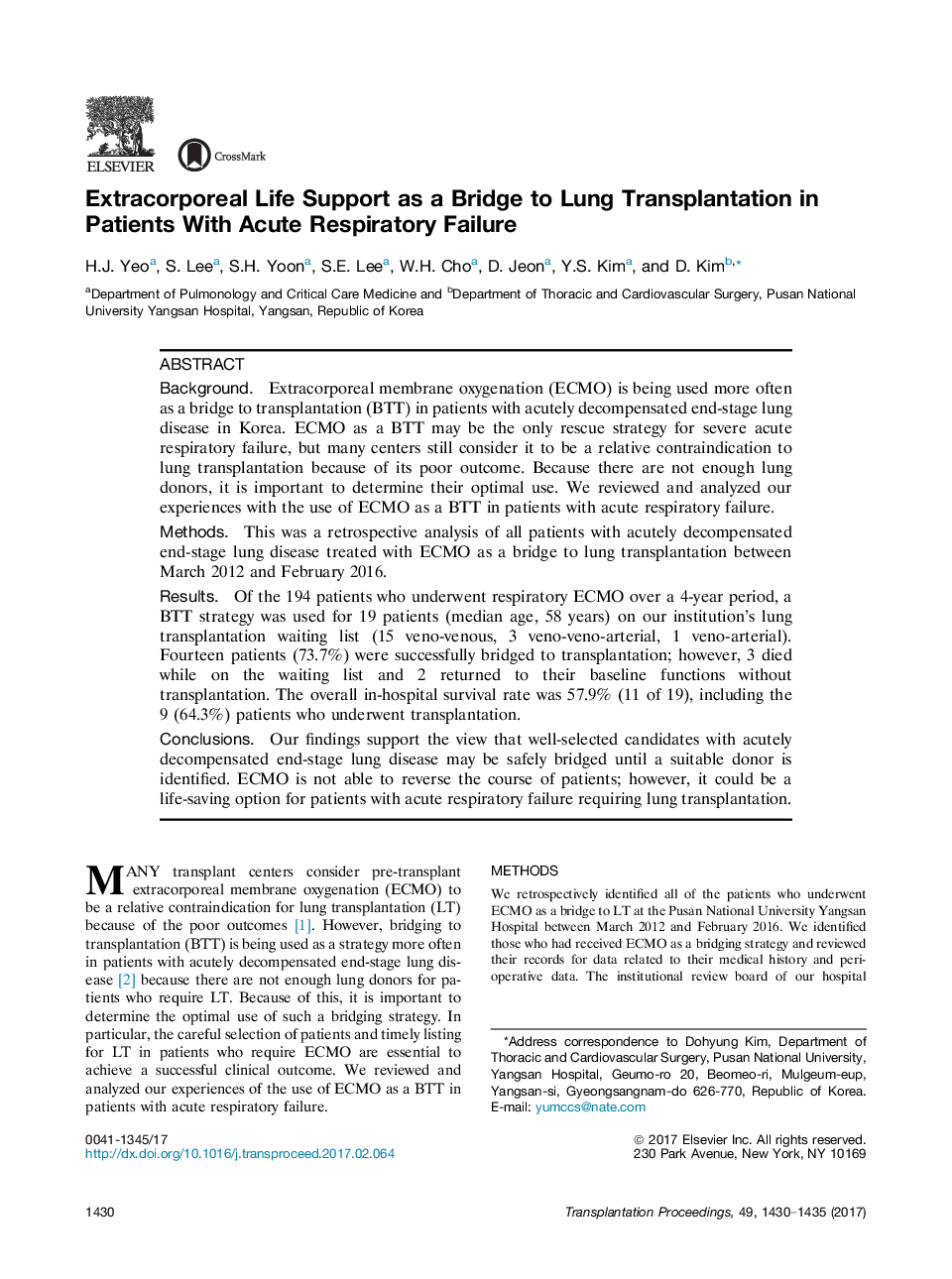| Article ID | Journal | Published Year | Pages | File Type |
|---|---|---|---|---|
| 5728705 | Transplantation Proceedings | 2017 | 6 Pages |
â¢ECMO is an important strategy in bridging patients with acute respiratory failure to transplantation.â¢Well-selected candidates with acute respiratory failure can be safely bridged until a suitable donor is identified.â¢ECMO could be a promising alternative bridging strategy to transplantation, allowing more physiological respiratory assistance.
BackgroundExtracorporeal membrane oxygenation (ECMO) is being used more often as a bridge to transplantation (BTT) in patients with acutely decompensated end-stage lung disease in Korea. ECMO as a BTT may be the only rescue strategy for severe acute respiratory failure, but many centers still consider it to be a relative contraindication to lung transplantation because of its poor outcome. Because there are not enough lung donors, it is important to determine their optimal use. We reviewed and analyzed our experiences with the use of ECMO as a BTT in patients with acute respiratory failure.MethodsThis was a retrospective analysis of all patients with acutely decompensated end-stage lung disease treated with ECMO as a bridge to lung transplantation between March 2012 and February 2016.ResultsOf the 194 patients who underwent respiratory ECMO over a 4-year period, a BTT strategy was used for 19 patients (median age, 58 years) on our institution's lung transplantation waiting list (15 veno-venous, 3 veno-veno-arterial, 1 veno-arterial). Fourteen patients (73.7%) were successfully bridged to transplantation; however, 3 died while on the waiting list and 2 returned to their baseline functions without transplantation. The overall in-hospital survival rate was 57.9% (11 of 19), including the 9 (64.3%) patients who underwent transplantation.ConclusionsOur findings support the view that well-selected candidates with acutely decompensated end-stage lung disease may be safely bridged until a suitable donor is identified. ECMO is not able to reverse the course of patients; however, it could be a life-saving option for patients with acute respiratory failure requiring lung transplantation.
